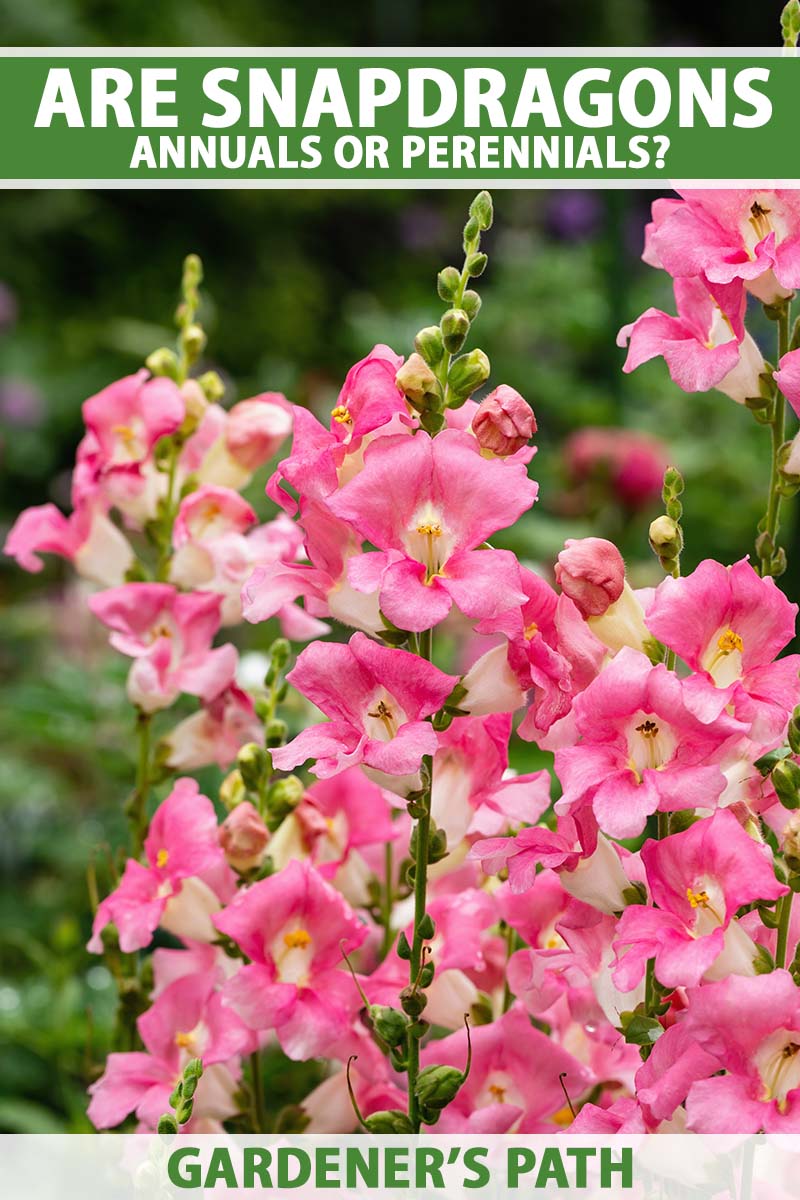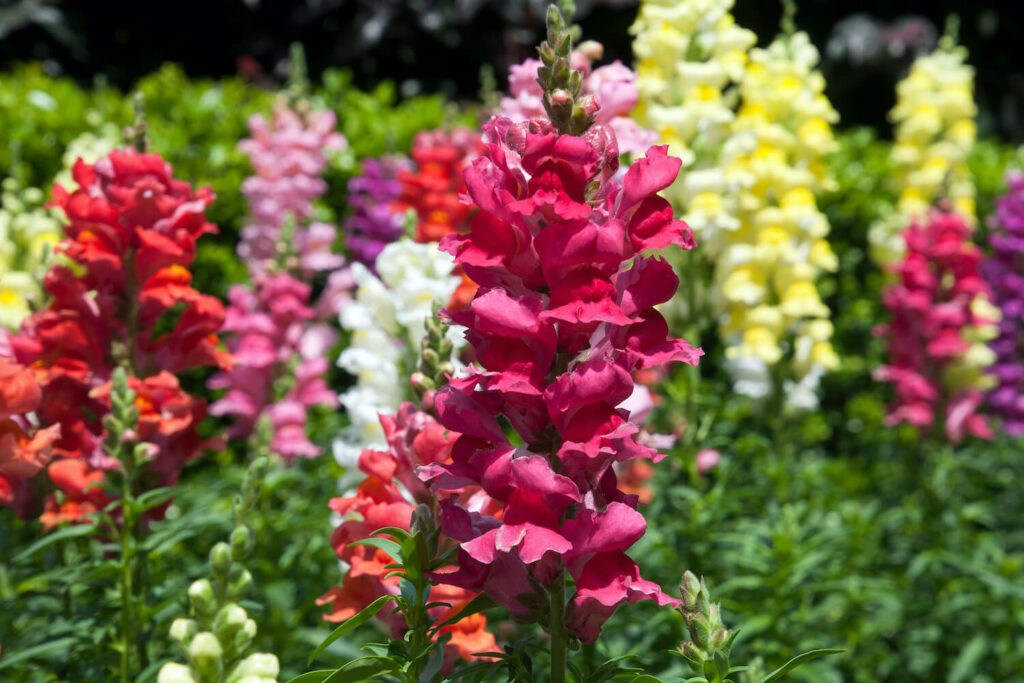What Makes a Plant an Annual or Perennial?
When it comes to understanding the lifespan of plants, it’s essential to distinguish between annuals and perennials. Annuals are plants that complete their life cycle within a year, germinating, growing, producing flowers and seeds, and dying all within a single growing season. Examples of annuals include marigolds, petunias, and tomatoes. On the other hand, perennials are plants that live for more than two years, often regrowing new stems and leaves from the same roots year after year. Examples of perennials include roses, daylilies, and hostas. This fundamental difference in growth habits and lifespans is crucial in determining whether a plant is an annual or perennial. So, are snapdragons annuals or perennials? To answer this question, we need to delve deeper into their growth patterns and characteristics.
Understanding the distinction between annuals and perennials is vital for gardeners and botanists alike. By recognizing the unique characteristics of each type of plant, we can better care for them and appreciate their role in our gardens and ecosystems. As we explore the world of snapdragons, we’ll examine their growth patterns, climate and region-specific behaviors, and care requirements to ultimately determine whether they are annuals or perennials.
How to Identify Snapdragons: A Closer Look at Their Growth Patterns
Snapdragons are known for their striking, tall spikes of colorful flowers, but what can their growth patterns reveal about their lifespan? To determine whether snapdragons are annuals or perennials, it’s essential to examine their height, spread, and blooming periods. Snapdragons can grow up to 3 feet tall, with a spread of around 12-18 inches. They typically bloom in the spring and summer months, producing an abundance of flowers in shades of yellow, orange, red, and white.
The growth patterns of snapdragons can provide valuable clues about their lifespan. For instance, if snapdragons complete their life cycle within a year, producing seeds and dying off after blooming, they are likely annuals. On the other hand, if they regrow new stems and leaves from the same roots year after year, they may be perennials. So, are snapdragons annuals or perennials? The answer lies in their growth habits and characteristics, which can vary depending on climate, region, and care.
By understanding the growth patterns of snapdragons, gardeners can better appreciate these beautiful flowers and provide the necessary care to maximize their lifespan. Whether snapdragons are annuals or perennials, their unique characteristics and growth habits make them a valuable addition to any garden or floral arrangement.
The Role of Climate and Region in Snapdragons’ Lifespan
Climate, region, and weather conditions play a significant role in determining the lifespan of snapdragons. In regions with mild winters and cool summers, snapdragons may behave as perennials, regrowing new stems and leaves from the same roots year after year. However, in areas with harsh winters or extreme temperatures, snapdragons may only survive for a single growing season, making them annuals.
The lifespan of snapdragons can also be influenced by factors such as soil quality, moisture levels, and sunlight exposure. For instance, snapdragons grown in well-draining soil with full sun may thrive as perennials, while those grown in shady or waterlogged conditions may only last for a single season. Understanding the specific climate and region in which snapdragons are grown is crucial in determining their lifespan and providing the necessary care to maximize their growth.
In regions with a Mediterranean climate, such as California or the Mediterranean coast, snapdragons may behave as perennials, surviving for multiple years with proper care. In contrast, in regions with cold winters, such as the Northeast United States, snapdragons may only survive for a single growing season, making them annuals. By understanding the role of climate and region in snapdragons’ lifespan, gardeners can better appreciate the unique characteristics of these flowers and provide the necessary care to extend their lifespan.
So, are snapdragons annuals or perennials? The answer lies in their growth habits and characteristics, which can vary depending on climate, region, and care. By understanding the factors that affect their lifespan, gardeners can better appreciate these beautiful flowers and provide the necessary care to maximize their growth.
How to Care for Snapdragons: Tips for Maximizing Their Lifespan
To maximize the lifespan of snapdragons, it’s essential to provide them with the right care. Snapdragons thrive in well-draining soil with a pH between 6.0 and 7.0. They require full sun to partial shade, depending on the climate and region. Watering should be consistent, but not excessive, as snapdragons are susceptible to root rot.
Pruning is also crucial in extending the lifespan of snapdragons. Remove spent flowers to encourage new blooms and prevent seed production. Cut back the stems to about half their height after blooming to promote new growth. This will help snapdragons regrow and potentially behave as perennials in regions with mild winters.
Fertilization is another key aspect of snapdragon care. Feed them with a balanced fertilizer during the growing season to promote healthy growth and blooming. Avoid over-fertilizing, as this can lead to weak growth and reduced blooming.
By providing snapdragons with the right care, gardeners can extend their lifespan and enjoy their beautiful blooms for a longer period. Whether snapdragons are annuals or perennials, proper care can make a significant difference in their growth and longevity. So, are snapdragons annuals or perennials? The answer lies in their growth habits, characteristics, and the care they receive.
By following these tips and understanding the factors that affect their lifespan, gardeners can enjoy the beauty and benefits of snapdragons in their gardens. Whether used as a cut flower, in containers, or as a border plant, snapdragons are a valuable addition to any garden design.
Debunking the Myth: Are Snapdragons Truly Annuals or Perennials?
One of the most common misconceptions about snapdragons is that they are always annuals. However, this is not entirely accurate. While snapdragons may behave as annuals in certain regions, they can also be perennials in others. The key to understanding their lifespan lies in their growth habits, characteristics, and the care they receive.
According to horticultural experts, snapdragons are technically tender perennials, meaning they can regrow from the same roots year after year in regions with mild winters. However, in areas with harsh winters or extreme temperatures, they may only survive for a single growing season, making them annuals in those regions.
So, are snapdragons annuals or perennials? The answer depends on the specific climate and region in which they are grown. By understanding the factors that affect their lifespan, gardeners can better appreciate these beautiful flowers and provide the necessary care to extend their lifespan.
Some experts argue that snapdragons are annuals because they complete their life cycle within a year, producing seeds and dying off after blooming. However, this definition is too narrow, as it does not take into account the plant’s ability to regrow from the same roots in certain regions.
In reality, snapdragons exhibit characteristics of both annuals and perennials, making them a unique and fascinating plant. By recognizing this complexity, gardeners can better appreciate the beauty and value of snapdragons in their gardens.
Practical Applications: Using Snapdragons in Your Garden
Snapdragons are a versatile and valuable addition to any garden, offering a range of benefits and uses. One of the primary advantages of snapdragons is their ornamental value, with their tall, colorful spikes adding a dramatic touch to borders, containers, and cut flower arrangements.
In addition to their aesthetic appeal, snapdragons are also relatively low-maintenance, making them an ideal choice for busy gardeners. They require minimal care, aside from regular watering and pruning, and can thrive in a variety of soil types and conditions.
Snapdragons are also a valuable resource for pollinators, such as bees and butterflies, which are attracted to their nectar-rich flowers. By incorporating snapdragons into garden designs, gardeners can support local pollinator populations and contribute to a healthier ecosystem.
To make the most of snapdragons in your garden, consider the following tips:
– Plant snapdragons in well-draining soil with full sun to partial shade, depending on the climate and region.
– Water regularly, but avoid overwatering, which can lead to root rot and other problems.
– Prune snapdragons regularly to encourage new growth and prevent seed production.
– Use snapdragons as a cut flower, either on their own or in combination with other blooms, to add a pop of color and texture to arrangements.
By understanding the benefits and uses of snapdragons, gardeners can unlock their full potential and enjoy these beautiful flowers for years to come. Whether you’re a seasoned gardener or just starting out, snapdragons are an excellent choice for adding color, interest, and value to your garden.
Conclusion: The Verdict on Snapdragons’ Lifespan
In conclusion, the lifespan of snapdragons is a complex and multifaceted topic, influenced by a range of factors including growth habits, climate, region, and care. While snapdragons are often classified as annuals, they can also behave as perennials in certain regions and conditions.
Through a closer examination of their growth patterns, climate and region, and care requirements, it becomes clear that snapdragons are not simply annuals or perennials, but rather a unique and adaptable plant that can thrive in a variety of environments.
The key to understanding snapdragons’ lifespan lies in recognizing their ability to regrow from the same roots in certain regions, and their sensitivity to climate and weather conditions. By providing proper care and attention, gardeners can extend the lifespan of snapdragons and enjoy their beautiful blooms for years to come.
Ultimately, the question of whether snapdragons are annuals or perennials is not a simple one, and the answer depends on a range of factors. However, by understanding the complexities of snapdragons’ lifespan, gardeners can better appreciate these beautiful flowers and unlock their full potential in the garden.
In the end, the verdict on snapdragons’ lifespan is clear: they are a unique and fascinating plant that defies simple classification, and offer a range of benefits and uses for gardeners of all levels. Whether you’re a seasoned gardener or just starting out, snapdragons are an excellent choice for adding color, interest, and value to your garden.
Further Insights: Snapdragons’ Unique Characteristics and Uses
Beyond their fascinating lifespan, snapdragons possess a range of unique characteristics and uses that make them a valuable addition to any garden.
One of the most striking features of snapdragons is their seed pods, which resemble tiny dragons’ heads and can be used in craft projects or as a decorative element in floral arrangements.
Snapdragons also have a rich history of medicinal use, with the plant containing antioxidants and anti-inflammatory compounds that have been used to treat a range of ailments.
In addition to their ornamental value, snapdragons are also a valuable resource for pollinators, providing a rich source of nectar and pollen for bees, butterflies, and other beneficial insects.
By understanding the unique characteristics and uses of snapdragons, gardeners can unlock their full potential and appreciate the many benefits they bring to the garden.
In the end, the question of whether snapdragons are annuals or perennials is just one aspect of their fascinating story. By delving deeper into their unique characteristics and uses, gardeners can gain a deeper appreciation for these remarkable flowers and the many ways they can enrich our lives.
Ultimately, the importance of understanding snapdragons’ lifespan lies in recognizing the many benefits they bring to the garden, from their ornamental value to their ability to attract pollinators and provide medicinal properties. By embracing the complexities of snapdragons’ lifespan, gardeners can unlock their full potential and enjoy these beautiful flowers for years to come.


:max_bytes(150000):strip_icc()/growing-and-caring-for-snapdragons-1402915-02-26029831acc34ccb9dd3cb944de9d4e1.jpg)



